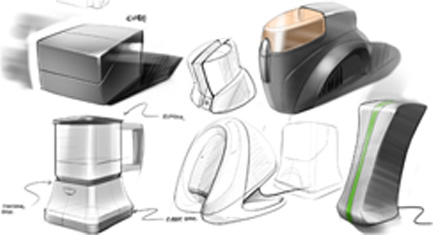The laws governing the registration and enforcement of Designs in India are provided in the Designs Act 2000. Design pertains to aesthetic features of shape, Configuration, Pattern, Ornament or Composition of lines or Colors applied to any article whether in two dimensional or three dimensional or in both forms. An Industrial Design is primarily of an aesthetic nature and therefore, the technical features and functional aspects of the products are not protected under Designs. A Design must be new and original in order to be registered. It should not have been disclosed to the public anywhere in world and should not be contrary to public order or morality.
The registered proprietor of a Design has the exclusive right to stop others from infringing his registration by making, applying the Design or importing articles bearing the Design. The term for registration of Design is ten years which can be further renewed for a period of five years before expiration of tenth year.
FAQs
Design means only the features of shape, configuration, pattern or ornament or composition of lines or color or combination thereof applied to any article whether two dimensional or three dimensional or in both forms, by any industrial process or means, whether manual, mechanical or chemical, separate or combined, which in the finished article appeal to and are judged solely by the eye, but does not include any mode or principle or construction or any thing which is in substance a mere mechanical device, and does not include any trade mark, as define in clause (v) of sub-section of Section 2 of the Trade and Merchandise Marks Act, 1958, property mark or artistic works as defined under Section 2(c) of the Copyright Act, 1957.
Object of the Designs Act to protect new or original designs so created to be applied or applicable to particular article to be manufactured by Industrial Process or means. Sometimes purchase of articles for use is influenced not only by their practical efficiency but also by their appearance. The important purpose of design Registration is to see that the artisan, creator, originator of a design having aesthetic look is not deprived of his bonafide reward by others applying it to their goods.
- The design should be new or original, not previously published or used in any
country before the date of application for registration. The novelty may reside in the
application of a known shape or pattern to new subject matter. Practical example:
The known shape of "Kutub Minar" when applied to a cigarette holder the same is registrable. However, if the design for which application is made does not involve any real mental activity for conception, then registration may not be considered. - The design should relate to features of shape, configuration, pattern or ornamentation applied or applicable to an article. Thus, designs of industrial plans, layouts and installations are not registrable under the Act.
- The design should be applied or applicable to any article by any industrial process. Normally, designs of artistic nature like painting, sculptures and the like which are not produced in bulk by any industrial process are excluded from registration under the Act.
- (4) The features of the design in the finished article should appeal to and are judged solely by the eye. This implies that the design must appear and should be visible on the finished article, for which it is meant. Thus, any design in the inside arrangement of a box, money purse or almirah may not be considered for showing such articles in the open state, as those articles are generally put in the market in the closed state.
- (5) Any mode or principle of construction or operation or any thing which is in substance a mere mechanical device, would not be registrable design. For instance a key having its novelty only in the shape of its corrugation or bend at the portion intended to engage with levers inside the lock associated with, cannot be registered as a design under the Act. However, when any design suggests any mode or principle of construction or mechanical or other action of a mechanism, a suitable disclaimer in respect there of is required to be inserted on its representation, provided there are other registrable features in the design.
- The design should not include any Trade Mark or property mark or artistic works as define under the Copyright Act, 1957.
When an application for registration of a Design is in order, it is accepted and registered and then a certificate of registration is issued to the applicant.
However, a separate request should be made to the Controller for obtaining a certified copy of the certificate for legal proceeding with requisite fee.
The registration of a design confers upon the registered proprietor ‘Copyright’ in the design for the period of registration. ‘Copyright’ means the exclusive right to apply a design to the article belonging to the class in which it is registered.
The duration of the registration of a design is initially ten years from the date of registration, but in cases where claim to priority has been allowed the duration is ten years from the priority date.
The proprietor of a design may make application for such extension even as soon as the design is registered.
